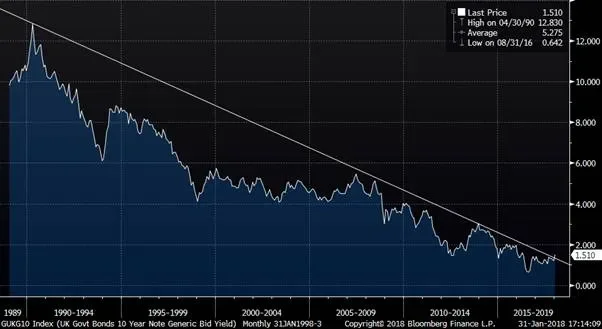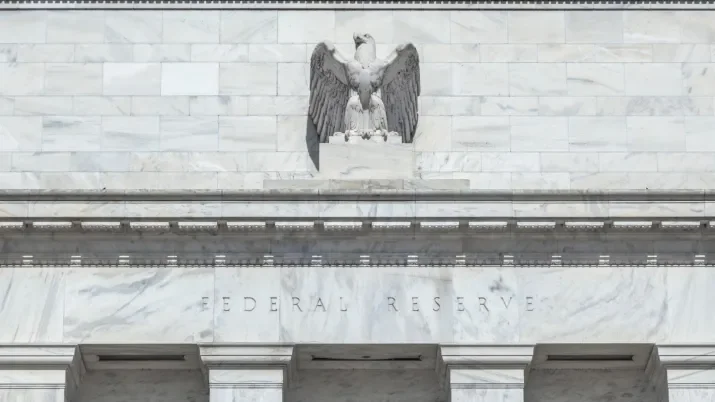Are Gilts in a Bear Market
Yesterday, 10yr Gilts closed at 1.510%. Whilst that individual yield level does not sound particularly significant, in a historical context it is possibly one of the most important month end closing levels I have witnessed in more than 25 years in the markets. Why? The 10yr gilt has finally broken a trend line of falling yields that has been in place since April 1990.
10yr Gilt Yield:

Source: Bloomberg, 27/02/1989 to 31/01/2018
Now, of course, it is possible to argue that earlier trend lines drawn from the April 1990 peak in yields were broken in the early 1990s and early 2000s. That is true. But as time has marched on, the long term trend line has become more significant, and therefore more important when it finally breaks – but break it finally has.
This echoes what has recently happened in US Treasuries, with Bill Gross stating on the 9th January: “Bond bear market confirmed today. 25 year long-term trendlines broken in 5yr and 10yr maturity Treasuries.”
We have been positioned for rising rates yields for some time in our portfolios, and expect sovereign yields to rise a little more in 2018 for bunds, US Treasuries, and gilts. But that does not mean we expect a large sell-off, or a persistent bear market, either.
Turning to the UK specifically, whilst the front end of the yield curve is pricing in a near 50% probability of one rate hike by June this year, further pressures on rates beyond one hike are very unlikely as we believe inflation has most likely peaked in the UK. Further, risks around Brexit negotiations are unlikely to lead to any significant surge in GDP, nor wages, that might also concern the MPC.
So, having broken 1.4860% on a closing basis (a previous resistance level), where could 10yr Gilt yields get to in the short term? Using standard Fibonacci retracement levels, which are often used in technical analysis, the next key levels would appear to be 1.790% and 2.095% on the 10yr. Our view would be that a modest sell off to something like 1.75% is quite likely over the course of the year – and that is how we are positioned by keeping duration low across our portfolios. In return terms, that would equate to a total return of -3.5%. For yields to go higher than that however would require stronger than expected data, or global inflationary pressures to come to the fore, and we believe it will be some time before inflation comparisons in the US start to bite.
So ultimately we do not quite share Bill Gross’s view that we are in a bear market for bonds – but as ever we would caution investors to stay nimble, and especially not to get locked into illiquid longer dated positions.




